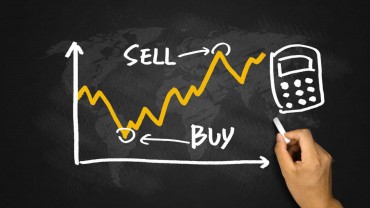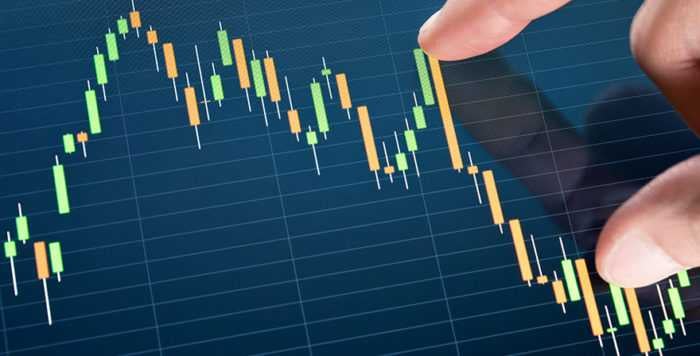
In options trading, the underlying asset can be stocks, commodities, futures, index, currencies. The option of stock gives the right to buy or sell the stock at a definite price and specified date.
By Guy Avtalyon
Before we explain deeper: what is options trading, we need to understand why we should trade options at all. If you think it something fancy, you couldn’t be more wrong. Actually, the origin of options trading came from ancient times. For example, Ancient Greeks were speculating on the price of olives before harvest and traded according to that. When someone asks you: what is options trading and argues that it belongs to modern stock brokerages just tell such one about trading olives.
From the first day of trade existence, people were trying to guess the price of food or some item they wanted to buy.
What is options trading?
We have a simple example to answer the question: “ What is options trading.”
Let’s say we want to buy a stock at $10.000. But the broker tells us that we can buy that stock at $20 and the time is limited so we have to make our decision in a short time frame but we don’t know “ what is options trading.” This broker’s offer means that we have to pay $20 now and get a right to buy the stock after one month. Well, our right, in this case, obligates the seller to sell us that stock at $10.000 even if the price increases in value after one month. This $200 will stay in the broker’s account forever. We will never get it back. But we got the right to buy the stock at the price we are willing to pay.
How does options trading work?
We understand there is a chance that the stock price will increase much over $10.200, we want to pay our broker an extra $200 to provide us the right to buy the stock at $10.000. Moreover, we saved the rest of our $10.000 so we can keep it or invest in something else while waiting for the end of the period.
Okay, the end is here, the one-month period is over so what is the next? Well, we have the right to buy that stock at $10.000 and we noticed the price is much over that amount. Of course, we will buy it at the agreed price. But what to do if the price is below the guessed price? Remember, we have the RIGHT to BUY not OBLIGATION. So, we can buy or not depending on the stock price.
This is a very simple explanation on the question: What is options trading, but this is the essence.
The options are derivatives. That means their prices are derived from something else, frequently from stocks. The price of an option is connected to the price of the underlying stock. Options trading is possible with the stocks, bonds market, and ETFs, and the like.
What are the advantages of options trading?
Some investors are avoiding options because they believe they are hard to understand. Yes, they can be if your broker has a lack of knowledge about them. Of course, you can have less than need knowledge about options trading. But the truth is, it isn’t hard to learn because this kind of trading provides a lot of advantages. Keep in mind that options are a powerful tool so use them with the necessary diligence to avoid major problems.
Sometimes, we think that characteristics like “critical” or “unsafe” are unfairly connected to the options. But when you have all the information about options you’ll be able to make a proper decision.
Cost less
One of the most important advantages of options trading is it will cost you less. Let’s see how it is possible.
Yes, we know that some people will claim that buying options are riskier than holding stocks. But we want to show you how to use options and reduce risk. Hopefully, you will understand that all depend on how you will use them.
First of all, we don’t need as much financial assurance as equities require. Further, options are relatively immune to the possible effects of gap openings. But the most important, options are the most dependable form a hedge. Are they safer than stocks though? Yes!
Lower risk
Let’s say this way. When we are trading stocks, we have to set a stop-loss order to protect our position. We are the one who has to determine the price at which we are not willing to lose more. And here is the problem. Stops are designed to be executed when stocks trade at or below the limit we set. So, what if we place a stop-loss order at, for example, $36 for the stock we bought at $40. We don’t want to lose more than 10% on that stock. Our stop-loss order will become a market order and our stock will be sold when the price reaches $36 or less. This is how this order will work during the trading day but what can happen over the night?
How to use options as a hedge?
Here is where the problems arise. Let’s say we closed stock at $38. Almost immediately after the opening bell, the next morning, due to the bad morning news about the company, our stock fell under $15. So that will be the price we’ll get for our stock. We’ll be locked in a great loss. The stop-loss order did nothing for us. If we bought the options as protection instead, we wouldn’t have such a great loss since the options never shut down after the closing bell. We would have insurance 24/7.
Can you understand how the options are a more dependable form of hedging?
And as an additional choice to buying the stock, we could employ the stock replacement strategy. This means we would buy an in-the-money call instead of buying the stock. We have a lot of possibilities with options trading since the options mimic almost 85% of a stock’s performance. The benefit is that they cost 25% of the price of the stock. For example, if we bought an option at $25 instead of a stock at $100, our loss will be limited on that amount, not on the stock price.
Do options have higher returns?
We don’t need to be a great mathematician (well, some of us are, that’s true) to understand that if we pay less and take the same profit, we have higher returns. That is exactly what options trading provides us.
Let’s analyze this part and compare the returns in both cases.
For example, we bought a stock for, let’s say $100. You bought an option of that stock at $25. This stock has a delta of 70, so the option’s price will change 70% of the stock’s price movement. (This is a made-up example, please keep that in mind.)
So, the stock price goes up for $10, and our position on this stock will give us 10% of the return. You bought an option and your position will give you 70% of the stock change (delta is 70, remember?) which is $7.
Do you understand?
We paid the same stock $100, you paid $25.
Our return on that stock is 10% which is $10; your gain on investment of $25 is $7 which is a 28% return on investment. Who made a better job?
Of course, when the trade goes against you, options can impose heavy losses. There is a chance to lose your entire investment.
Benefits of options trading
Options trading can be a great addition to your existing investing strategy. They will give you leverage in your investing. You will have cheaper exposure to the stocks, increasing profits and losses when the stock price changes. One of the benefits is that options can reduce the risk in the overall portfolio. For example, a protective put trade. That is when you combine purchasing a put option to sell stock at a specified price. That will provide you the upside when the stock price rises but also, that will protect you from losses when the stock price drops. Also, you can earn by selling the options. You will receive the money even if the stock isn’t exercised. That is compensation for giving someone else the right to buy your stock but that one never did it. You’ll keep the money anyway.
Bottom line
Options offer more investment options. They are highly adjustable vehicles. You can use options for positions synthetics. But it is for advanced traders.
But there are some extreme risks to options. Firstly, options can expire worthlessly. That will be a complete loss of whatever you paid for the options. Further, options are highly volatile. Many brokerages will offer options trading, but with some added requirements before they will let you trade options.
Also, speaking about options strategies, they will work well when you make many trades simultaneously. You have to know that options markets aren’t constantly liquid as the stock market. The simultaneous trades don’t always go ideally. So, your strategy may not work the way you expected. Many online brokerages will give you access to options trading with low commission costs. So, we all can use this powerful tool. But, take some time to learn how to use options accurately. It is still new for individual investors.





